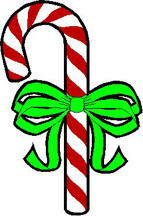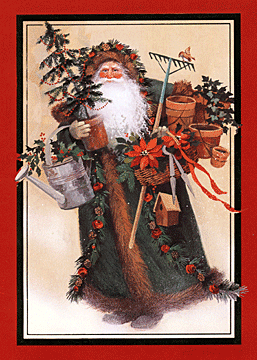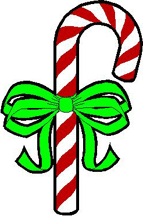IN SEARCH OF SANTA CLAUS
by Bob BrookeIn the spirit of the holiday, take time to give of yourself to the ones you love.

Nicholas was an actual person, though people know little about him. He was bishop of Myra, in Lycia, Asia Minor, in the first part of the fourth century of the Christian era. He wasn’t a bare-foot recluse vowed to poverty, but instead inherited riches from his wealthy merchant father, enabling him to be a dispenser of gifts.
wenty-six years ago I traveled to the North Pole in search of Santa Claus. I didn’t get any further than Barrow, Alaska–the Arctic Ocean was completely frozen in huge mounds of ice–but the people there said I needn’t go any further since no one lives at the North Pole. To say I was disappointed is an understatement. But my quest for Santa Claus continued until this year.
The Dutch and the Belgians still observe the feast of St. Nicholas on December 6, his birthday. He’s not the merry fellow with a chubby face and twinkling eye, but a venerable bishop. He rides a horse instead of driving a team or reindeer and leaves his gifts in stockings, shoes or baskets. And for children who have been very naughty, and whose parents cannot give him a good account of them, he leaves a rod by way of admonition, for he is a highly moral saint, though kind and forgiving. If the parents are too poor to buy gifts, the children say that the saint's horse has glass legs and has fallen down and broken his foot. St. Nicholas’ horse isn’t forgotten, for children leave a wisp of hay for him, and in the morning it’s gone.
European artists have always portrayed St. Nicholas as this medieval bishop with a long, gray beard. But in 1863, Thomas Nast, a political cartoonist, introduced a far more endearing version of him, one whose robust good cheer and imaginative house at the North Pole was believable to children and some adults.
Nast drew Santa Claus,. whose name originated in Holland, as a plump, jovial man who smoked a long-stemmed pipe and wore buckled clogs. He got the idea from Washington Irving, author of The Legend of Sleepy Hollow, who, in 1809, had written an article which included a description of St. Nicholas as a tubby Dutch burgomaster who made his benevolent rounds on a fine white horse.
Using his own family as unsuspecting models, Nast created enchanting scenes of children sleeping in armchairs as Santa entered their homes by way of the chimney and appeared on the fireplace hearth to deliver gifts. Other illustrations depicted children arranging gifts and treats for Santa.
But Nast still needed to flesh out his Christmas character. And Clement C. Moore’s epic poem, ‘Twas the Night Before Christmas," helped him do just that. Nast liked the idea of portraying his Santa as an amiable, fur-swaddled figure carrying a huge bag of toys and riding in a sleigh being pulled by "eight tiny reindeer." Nast changed traditional brown fur to red and lined it with white.
So Nast renamed Moore’s main character "Santa Claus" and decided he should live at the North Pole, a geographically central location. He also created a toy shop staffed by an crew of industrious elves. Nast’s drawings were an instant hit and appeared in many issues of Harper’s Weekly between 1863 and 1886.
Seeing the potential in this child-oriented Christmas theme, American toy manufacturers wasted no time incorporating the "new" Santa into their products, resulting in a colorful spectrum of turn-of-the-century Christmas memorabilia.
Today, the image of Santa Claus has changed little. But it’s not the image I went in search of, but the true meaning behind the image. And finally I found it, not in the frozen wastes of the North Pole, but in my own heart. For it’s in giving that the true meaning of Christmas can best be understood.
Merry Christmas


